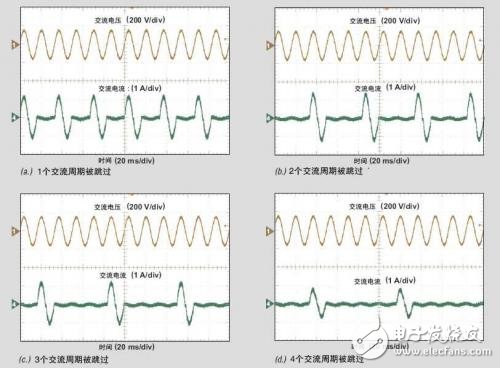For power supplies with input power greater than or equal to 75 watts, power factor correction (PFC) is typically required. Power factor correction forces the input current to change as the input voltage changes, so that any electrical load appears as a resistor to the voltage source it supplies. This is a requirement that must be met for many server, telecom and industrial applications. In these applications, the requirements for energy efficiency and power quality have become more stringent. The most important criteria for judging PFC performance are efficiency, total harmonic distortion (THD), and power factor (PF). With the new semiconductor devices and control methods, the latest PFC circuits have achieved excellent performance under moderate and heavy load conditions. However, under light load conditions, efficiency, THD and PF performance are severely degraded.

A typical PFC efficiency curve is shown in Figure 1. It should be noted that the efficiency becomes lower and lower at light loads. This is because switching losses, driving loss, and reverse recovery loss of a semiconductor element are a major factor affecting efficiency at a light load. At the same time, it is possible for the PFC to switch from continuous conduction mode (CCM) to discontinuous conduction mode (DCM), which causes the converter's dynamic performance to suddenly change and the current loop bandwidth to be greatly reduced. The reduced current feedback signal also makes control of the circuit very difficult. Therefore, the THD of the current waveform increases (Figure 2). This paper presents a new approach to increasing efficiency and reducing THD when PFC enters light load conditions. In this method, the PFC enters a particular burst mode when the load is reduced to less than a predetermined threshold. In this mode, depending on the size of the load, the PFC skips one or more AC cycles. In other words, the PFC will shut down during one or more AC cycles and reopen when the next AC cycle arrives. The on/off condition appears at the AC zero crossing point, which skips the entire AC cycle. In addition, since the PFC on/off occurs when the current is zero, the generated stress and electromagnetic interference (EMI) noise are smaller. This is different from the traditional Pulse Width Modulation (PWM) pulse skip burst mode; in this mode, the PWM pulses are randomly skipped.

The number of AC cycles to be skipped is inversely proportional to the load. If the load continues to decrease below the threshold, more AC cycles will be skipped.

23.8 & 24 Inch Aio,Aio Pc,All In One Gaming Pc,Touch Screen Computer
Guangzhou Bolei Electronic Technology Co., Ltd. , https://www.nzpal.com
